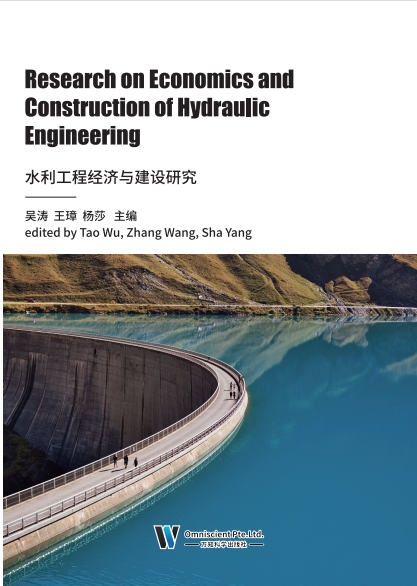
随着时代的发展,水利工程经济与建设和人们的经济、文化生活息息相关,同时 还影响着个人的安全问题及未来和谐社会的构建,因此对于水利工程经济与建设人们 也给予了更多关注。在关注时代发展带来更多技术革新的同时,建筑企业也开始专注 施工技术的管理工作,在保障建筑工程安全有序建设的基础上,提升水利工程建筑的 质量和施工效率,从而保障水利工程经济与建设,跟进行业技术革新,提升水利工程 市场的整体发展。 水利工程建设是按照设计提出的工程结构、数量、质量、进度及造价等要求修建 水利工程的工作。水利工程的运用、操作、维修和保护工作,是水利工程管理的重要 组成部分,水利工程建成后,必须通过有效的管理,才能实现预期的效果和验证原来 规划、设计的正确性;工程管理的基本任务是保持工程建筑物和设备的完整、安全, 使其处于良好的技术状况;正确运用水利工程设备,以控制、调节、分配、使用水资 源,充分发挥其防洪、灌溉、供水、排水、发电、航运、环境保护等效益。 水利工程是一项复杂的系统工程,涉及的知识面比较广,对社会经济和生态环 境会造成不同程度的影响。经济分析和评价是水利工程项目可行性的重要组成部分之 一。水利工程项目是国家的基础产业,关系到国计民生,所以必须将水利工程经济分 析工作重视起来。本书着重探讨阐述水利工程经济、建设及管理的若干问题,通过言 简意赅的语言、丰富全面的知识点以及清晰系统的结构,进行了全面且深入地分析与 研究,充分体现了科学性、发展性、实用性、针对性等显著特点。本书能为水利工程 经济与建设相关理论的深入研究提供借鉴。 由于水平和时间所限,书中不妥之处在所难免,恳请读者批评指正。
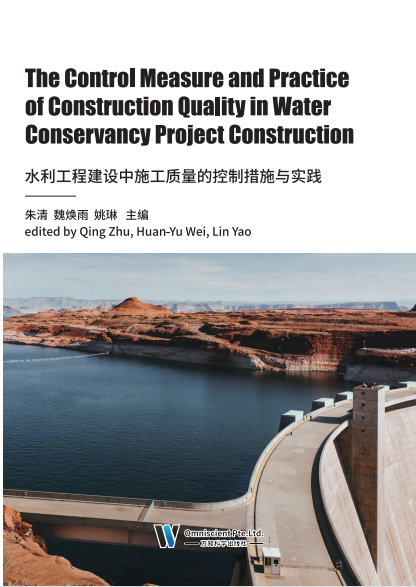
水利工程作为一项基础的工程设施,其质量不单单是由水利工程施工建设商来承 担相对应的责任,负责监管的相关部门也要发挥其自身的主观能动性,从实地出发, 对工程建设中存在的问题进行监督管理。水利工程基础设施的完善,不仅保证其在应 用过程中的顺利通畅,也推动着我国国民经济的快速发展。 水利工程的建设对于我国的发展有着十分重要的作用,因此我国应大力发展水利 工程。但是在水利工程的建设过程中,存在着很多问题,严重影响着施工质量,而其 施工质量的管理控制又会对建设单位的企业利益造成直接影响。基于此相关的管理部 门应加大对水利工程的施工管理力度,进而避免在施工中出现会对其质量造成相应的 影响,确保水利工程的质量。 总之,影响水利工程质量的因素有很多,同时这些问题在一定程度上造成了一 定的隐患。为了降低这些问题的出现,需要我们大家共同去努力。施工单位也要在施 工前做好充足的功课,以便于最大限度地提高水利工程的质量,提高工作人员的责任 心,提高质量控制人员的素质,科学的建立水利工程的质量体系。提高企业的技术水 平,为自己在市场竞争中多一份实力。 本书对水利工程建设中施工质量的控制措施与实践进行研究,通过对水利工程的 研究,提高水利工程抵御自然灾害的能力,保障人民群众的生命财产安全,维护社会 稳定。更进一步对水利工程的施工提出新的要求,对水利工程施工过程中的质量控制 引起高度的重视,对存在的问题进行全面科学地分析,总结相关经验,从而确保工程 可以顺利地进行。
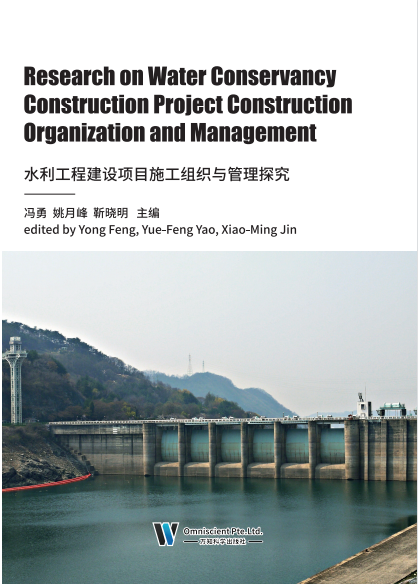
水利水电工程建设项目管理,是在建设项目生命周期内进行的有效规划、组织、 协调、控制等系统管理活动,目的是在限定的时间,质量要求,投资总额的约束条件 下最优的实现项目建设,达到预定的目标。水利工程具有自身的特殊性,水利施工企 业应该遵循水利工程施工的特点,按照市场规律,组建独立、优质、高效的项目经理 部,选派思想强,业务技术强、组织能力强的项目经理并对其实行风险责任制管理, 则项目经理必然发挥积极性创造性,以科学的方法对工程施工进度、施工成本、工程 质量等进行管理,从而使水利工程建设获得较好的经济效益和社会的效益。也就是 说,通过一定的组织形式,采取各种措施和方法,对工程项目,从项目建议书、可行 性研究、项目的决策以及设计、施工、竣工验收等系统的运动过程,进行规划组织、 协调、监督控制和总结评价,以达到保证建设项目的质量,缩短建设工期,提高投资 效益的目的。为此,通过多年经验,本书以水利工程建设项目施工组织与管理为切入 点,希望通过分析与研究,能够为有效做好水利工程提供帮助。
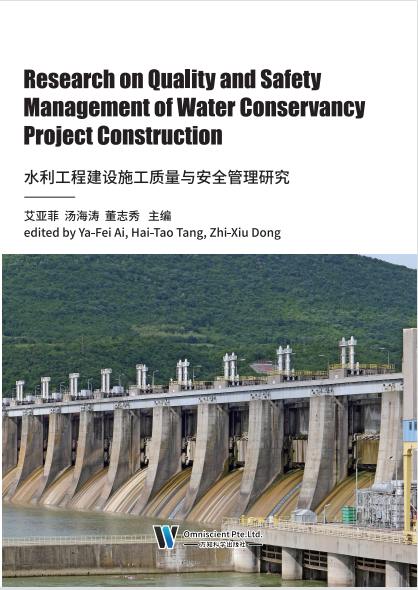
水利工程是国家建设的基础性工程,关乎人们的生命安全,工程建设具有社会公 益性。工程质量与安全控制不好不仅涉及建设、施工各方的利益,而且影响国民经济 的发展。质量管理工作复杂而艰巨,我们应该做好长远打算,对工程施工过程进行有 针对性的控制,保证施工质量。而安全管理是工程管理的主要组成部分,安全管理与 质量管理相辅相成,互为补充,只有保证施工安全才能有效控制施工质量,而只有保 证施工质量才能使工程运行安全,发挥最大的效益,实现质量与安全的良性循环,最 终达到施工管理的终极目标。 与此同时,水利工程承担防洪除涝、灌溉挡水等多重任务,具有社会公益性,对 人民生命财产安全和国家经济发展影响深远,施工工期较长,工艺复杂,施工中不安 全因素众多。施工质量与安全管理可以有效预防事故发生,有助于水利工程施工按施 工计划顺利进行,使整个施工过程处于受控状态。因此,加强施工质量与安全管理十 分重要。 本书为保证工程施工质量与安全,发挥水利工程最大的社会经济效益,进一步研 究探讨施工质量管理与安全管理,采取切实可行的建议措施,保障水利工程最终质量 和效益的发挥。
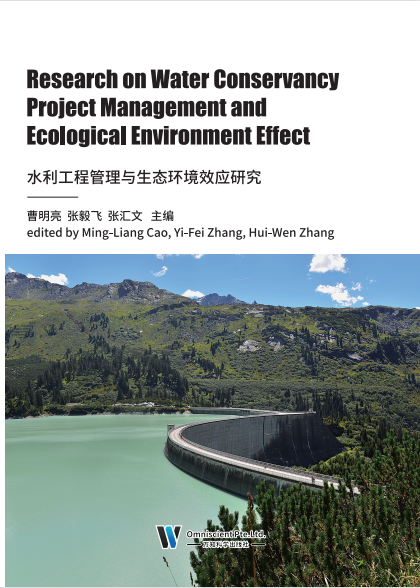
水利工程的发展对社会经济发展和人民生活起着重要的作用,也是一个国家综合国 力的重要体现。水力发电是一种可再生的且无污染的重要能源,其发展对我们的社会生 活来说起着举足轻重的作用,其利用的是大自然最原始的力量,相较于其他能源的开发 而言,污染更小,对生态环境的保护更加有利,因此各国对水利工程的建设都投入了较 多的资金。在水力发电发展的过程中,水利工程的生态环境评价是其环境效应的一个重 要方面,其对于水利工程的建设与发展都起着重要的作用,环境评价可以为已经产生的 问题提供一定的解决方案,对于未发生的问题进行一定程度的预防,在水利工程的整个 发展过程中起着监督和协调的作用,从而保障水利工程的健康发展。因此,有了科学、 合理的环境评价体系的监督和指引,水利工程才能更好地发展下去。 另外,水利工程发展的重要作用使我们投入了更多的精力和资源来对其进行研 究,并采取各种方法保证其健康发展。水利工程虽属于无污染的可再生能源,但其发 展与周边的自然环境和气候等因素联系紧密,其发展也会在一定程度上对这些因素产 生不同的影响。若其发展对这些因素产生了不利的影响,就需要采取相应的方法来进 行协调和改善,这个方法就是对水利工程进行环境效应测评。 本书《水利工程管理与生态环境效应研究》通过对水利工程的管理和生态环境效 应研究两个方面进行阐述,从而能够为可持续发展水利工程提供参考借鉴。